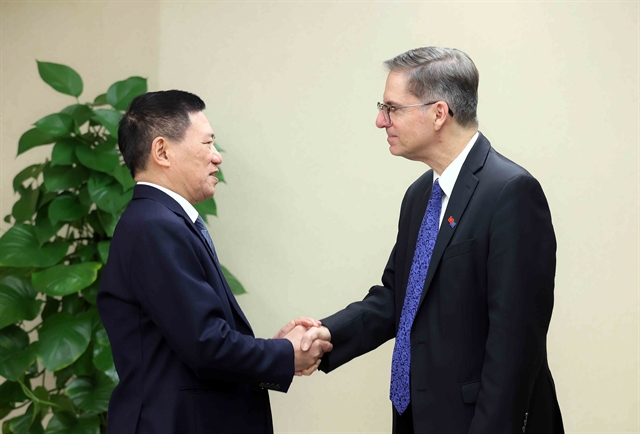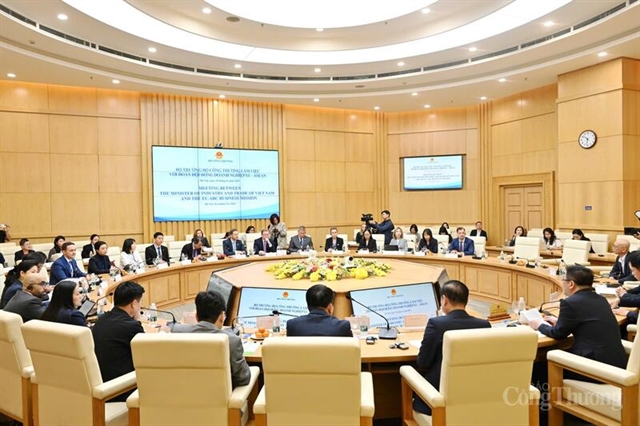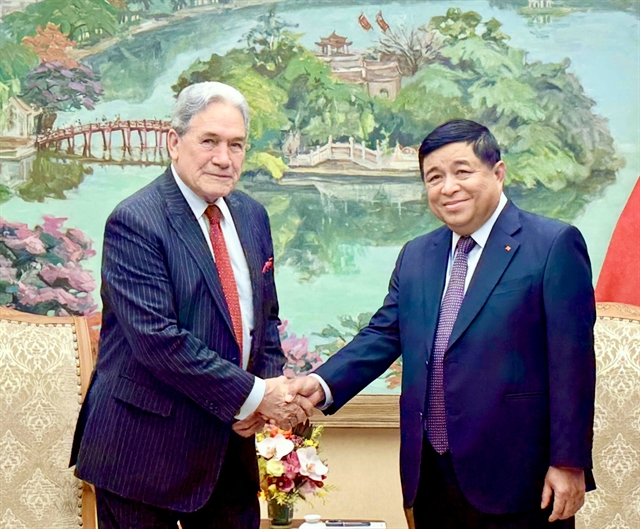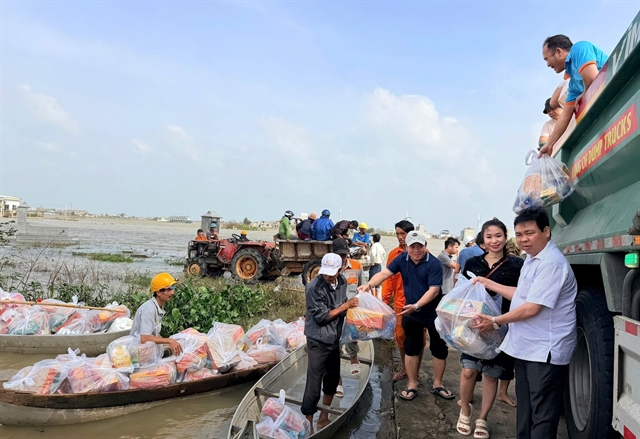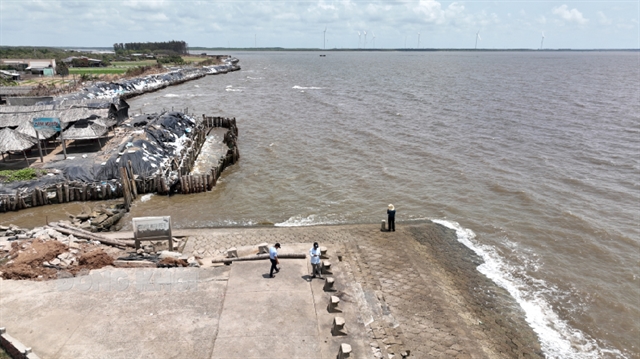 Economy
Economy
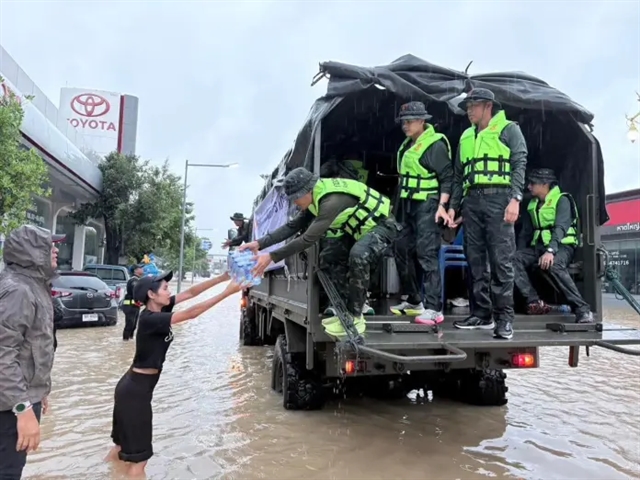
 |
| Lê Trần Nguyên Hùng, deputy director of the Fisheries Resources Surveillance Department. Photo congluan.vn |
Lê Trần Nguyên Hùng, deputy director of the Fisheries Resources Surveillance Department under the Ministry of Agriculture and Rural Development, speaks to Nhà Báo & Công Luận (Journalists & Public Opinions) newspaper about promoting the marine economy, a driving force for Việt Nam’s sustainable development in the era of the nation’s rise.
You once shared that we need to prioritise investment in marine conservation to preserve it for future generations. With many years of dedication to this sector, how do you evaluate marine conservation, biodiversity conservation and the advantages of developing our country's marine economy?
We are proud that Việt Nam is a country with the potential to develop the marine economy. Minister of Agriculture and Rural Development Lê Minh Hoan once said: "Marine farming is not only about fish, shrimp and squid farming. Marine farming is about raising marine ecosystems and the value of marine resources, including tangible and intangible value from the ocean. With our intelligence and knowledge, we must enrich the sea so that the sea can enrich us.”
Việt Nam is located in a region with fairly high biodiversity, ranking 16th among the countries with the highest biodiversity in the world.
The country has about 6,000 species of benthic animals, 2,038 species of fish, 225 species of sea shrimp, 15 species of sea snakes, 12 species of marine mammals, five species of sea turtles and 43 species of water birds, 653 species of seaweed, 657 species of zooplankton, 94 species of mangrove plants, 14 species of seagrass, and more than 400 species of corals.
These species live in more than 20 ecosystems and have high biological productivity, helping determine the primary productivity of the entire ocean.
They also create diversity in natural landscapes and ecology and provide aquatic resources for fishing and seed sources for aquaculture, medicine, functional foods, science, education, ocean health and tourism, contributing to the development of the local marine economy.
Marine ecosystems are a resource bestowed by nature, a premise for Việt Nam to develop a strong and sustainable blue economy.
.jpg) |
| The Núi Chúa-Ninh Thuận marine protected area in the south-central province of Ninh Thuận. VNA/VNS Photo |
On December 10, 2024, the Prime Minister issued Decision No. 1539/QD-TTg approving expansion and establishment of new marine protected areas and restoration of marine ecosystems by 2030, with an aim of maintaining the area of marine and coastal protected zones at 6 per cent of the total natural area of Vietnamese ocean. This strategic vision has opened up various growth opportunities in the new era, hasn’t it?
It has. We have clearly recognised that Việt Nam is a coastal country with large marine areas and continental shelves, containing rich and diverse marine resources, marine ecosystems and natural resources. Our country's seas and islands are not only potential economic development areas where vital sea traffic routes are located, and home to rich resources --they also act as important combat environments in the strategy of protecting the Fatherland.
Việt Nam’s marine area is also important for the country's economic development. Currently, over 31 per cent of the country's population lives in 28 coastal provinces and cities. Most cities and towns are located along rivers, not far from the sea, especially cities and towns in the central region. The coastal area is also home to major industrial centres and many important airports, seaports, naval bases, warehouses and other economic and defence projects.
Coastal provinces and cities have developed fisheries, aquaculture, fishing ports, ship repair and building facilities, seafood processing facilities and salt production, attracting more than 13 million workers, creating jobs and stabilising the economic, political, social and security-defence situation.
Resolution No. 36-NQ/TW on the strategy for sustainable development of Việt Nam's marine economy to 2030 was issued at the eighth conference of the seventh Party Central Committee in October 2018.
It stressed that sustainable development of the marine economy is the responsibility of the entire political system, the right and obligation of all organisations, enterprises and people in Việt Nam.
Sustainable development of the marine economy must be based on green growth and conservation of biodiversity and marine ecosystems, as well as ensure harmony between economic and natural ecosystems and between conservation and development. It must also promote the potential and advantages of the sea, creating momentum for the country's economic development.
The Ministry of Agriculture and Rural Development has consulted with the Prime Minister to approve four extremely important tasks.
These are planning for the protection and exploitation of aquatic resources for the 2021-30 period, a programme for investigation and overall assessment of aquatic resources and the living environment of aquatic species, a national programme on protection and development of aquatic resources through 2030, and a project on the expansion and establishment of new marine protected areas, aquatic resource protection areas and restoration of marine ecosystems through 2030.
The four tasks are all crucial for the conservation, protection, regeneration and restoration of aquatic resources towards developing green and sustainable aquaculture in the future.
Although many policies and solutions have been put in place, the conservation, protection, regeneration, restoration and development of aquatic resources towards a green and sustainable aquaculture industry still faces numerous challenges. What are your most concerning issues?
A system of marine protected areas has been gradually formed nationwide, effectively meeting the goal of conserving biodiversity and important marine ecosystems. Law enforcement at marine protected areas has been strengthened and achieved positive results, helping push back violations.
However, the marine ecosystems are still facing many threats and increasing risks from economic development activities and factors like tourism development, fishing, marine aquaculture, climate change and ocean acidification, plastic waste pollution and ocean waste.
Marine ecosystems are also seeing more sophisticated legal violations, such as the use of electric pulses, explosives, destructive fishing gear and other prohibited fishing gear used for fishing.
The organisation of the marine reserve management apparatus is not unified among localities.
Workers and investment funds for marine protected areas remain inadequate.
Việt Nam plans to create and efficiently administer 27 marine protected areas by 2030, comprising 16 provincial and 11 national regions. Since we currently only have 11 areas, more than 16 areas are required. The creation of marine protected areas is expected to confront numerous obstacles as Việt Nam enters the era of the nation’s rise and apparatus streamlining. Is it still possible to achieve the goal of creating 27 areas?
I believe that this goal is feasible on the condition that there must be joint effort from the entire political system, organisations, businesses and people. There must be a combination of solutions.
The first solution, I think, requires the joint effort and consensus of all levels from the central to local levels, especially local authorities, to effectively implement the plans and projects that have been proposed.
Special attention needs to be paid to investment in expanding established marine protected areas and forming new areas, according to the plan.
Second, it is necessary to raise public awareness from all walks of life about the benefits and responsibilities of conserving, protecting and restoring marine ecosystems so that each person understands and appreciates the value of marine resources bestowed by nature.
Only when it comes from the heart can each person consider protecting aquatic resources and marine ecosystems as protecting themselves, their families, their locality, future generations and the beautiful life around them.
Third, there must be more institutional breakthroughs, encouraging the involvement of organisations, individuals, and especially businesses in marine conservation, including activities like artificial reef releases as well as coral, seagrass and mangrove forest restoration.
This is a way to encourage businesses to contribute responsibly to society, as one of the three sustainable development indicators of businesses (Environment, Society and Governance, or ESG).
We must prioritise the allocation of human and financial resources to establish and effectively manage marine protected areas following approved plans and projects.
Fourth, we must enhance the capacity of the fisheries surveillance force and strengthen law enforcement by strictly handling violations in and around marine protected areas.
Fifth, I propose strengthening international cooperation to effectively mobilise international support resources for investment in marine protected areas. Việt Nam must strictly, fully and responsibly implement international and regional treaties and commitments on conservation, protection and restoration of marine ecosystems and conservation of marine biodiversity that we have signed.
The establishment and effective operation of the marine protected areas is an important and feasible goal in the near future. This task is not only to preserve the sustainability of seas and islands, but also an important legal basis to serve the sustainable development of the marine economy and protect the sovereignty of seas and islands as well as the territorial integrity of Việt Nam.
It demonstrates our positivity, determination and commitment to respect and enforce the provisions of the 1982 UNCLOS. It also shows that Việt Nam is a responsible member of the international community, determined to strive for peace, stability, cooperation and development in the region and the world. VNS

